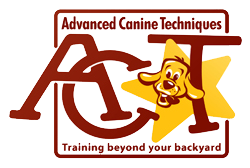Leadership, Energy, Attitude and Dedication (use these words to inspire you to work with your dog). LEAD – This is a great acronym to help you focus on both ends of the leash. Your dog needs you to be in the best state of mind to provide the guidance he needs to be successful. You need your dog to pay attention to you as the holders of the leash. Your dog is only going to pay attention to you if you are providing guidance, structure and a positive attitude to help them succeed.
Post this word everywhere in your house and use these words to help describe your attitude and energy with your dog(s).
Leadership-make sure you are telling your dog what to do, not asking. There is a difference. Be firm but fair. Make sure you are following through each time you give your dog a command. If you are not able to follow through with the command, DO NOT GIVE IT! Be prepared to help your dog whenever needed and don’t get frustrated if it takes time for them to understand what you want. Dogs need leadership, structure and feedback. Your dog will thrive with consistent rules, a familiar routine and positive and negative reinforcement.
Energy – how many of you like to hang around negative Nellie’s or Debbie downers? If you are angry, sad or frustrated, your dog will pick up on those emotions and feelings. You need to project a calm, confident and positive attitude to your dog. Training sessions should be short and positive and leave your dog wanting more. If you are getting frustrated all the time or losing your patience, then I would work with a professional to help you have a better relationship with your dog. It won’t get better if you are always feeling angry and bitter.
Attitude – give the gift of excitement and hope and be a cheerleader for your dog. Too many people dismiss their dog’s ability and don’t challenge or try to push them for more. Just like people, dogs NEED stress in their life. Positive stress can help your dog learn and grow. They want to please you so we need to help them and our attitude CAN and DOES influence their behavior. Challenge them and teach them new tricks, behaviors or commands. Add in a variety of distances, distractions and durations to their commands to help them focus. And take advantage of field trips so they get to experience more than the backyard or driveway. Car rides, local and/or state parks and pet friendly stores are great places to practice with your dog(s).
Dedication- dog training is a lifetime endeavor. Once you finish a class, complete a set of lessons or pay for a board and train program, you will still need to work with your dog each day. They need commitment from you to help them learn and grow. Don’t be afraid to try different training aids or different training methods with your dog. What worked for your last dog or neighbor’s dog may not work for your dog. Utilize different theories or training styles and be open minded about all the training aids available to you. Your dog will be committed to you if you are dedicated and provide for their mental, physical and emotional needs.

